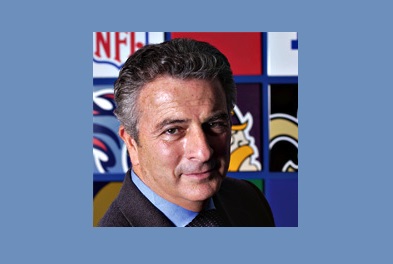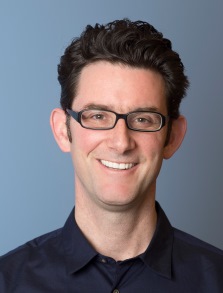Courage and Grit: An Interview with Media Legend Phil Guarascio - John Piccone

About this column: The words "Courage" and "Grit" are at the top of the list of the key ingredients successful leaders share. Courage is required to do something that has not been done before or improve something that others consider already optimal. Grit is required to stick with the mission in the face of adversity. Here, John Piccone talks with industry leaders about how they combined both courage and grit to change and improve status quo.
Phil Guarascio is a high profile innovator in the media and advertising world. His career as Media Director at a major New York City agency, VP of corporate marketing and advertising at General Motors and Lead Executive, marketing and sales at the National Football League has positioned him to see and impact many corners of the media and marketing spectrum at various times in the evolution and revolution of the business. I have had the pleasure of getting to know Phil through his involvement as a board member of Simulmedia. I have enjoyed how his perspective is always grounded in the proof that there is nothing new under the sun as long as you can weather the storms and recognize the silver linings. Here are a few examples of how he used courage and grit to change the media and marketing landscape as we know it.
John Piccone : What is the latest form of courage and grit that you feel today's marketing leaders need?
Phil Guarascio : In today's world, leaders need the courage to fail and the grit to learn quickly from those failures and to push for change. As technology has taken hold as the de facto power ingredient for marketing, those leaders who understand how to test and to apply learnings will gain an edge on their competition. Unfortunately, it is my view that the industry today is much more frozen in the status quo than people will admit and there is a lack of a willingness to try new things.
JP: What is your experience with looking at things that were smart but the status quo thinking prevented you from executing?
PG : I will share two examples from my days at General Motors. When I joined GM as the head of marketing the focus was on incentives, not on brand building. And the amount of money spent on this one tactic was impressive to say the least. But the car business is really about the brand so I proposed a test where we would take money out of incentives and put it into brand building. It was one my first big efforts. We got the sign-off to run a test for 18 months but the project was ultimately sabotaged by the field (dealerships) who did not want to lose the incentives. But by that point it was too late; we already had enough learnings about the impact of the brand awareness that showed it was something that we should scale.
The second thing I did that really put me out on the edge was creating the GM credit card. The GM card was once and still is the largest affinity card. The idea was simple: When you buy products you earn credits for GM discounts. I spent two years trying to convince the company to do it. The response was always "We don't need to be in that business" and "Who needs another credit card?" But I kept pushing, constantly adding new elements of support to the business case; identifying powerful customer benefits and anticipated customer response. However, the real obstacle was the field organization and dealers who had grown to rely on sales incentives as the primary tool to sell cars and trucks. It was almost an addiction. Success would hinge on the confidentiality of the customer's incentive rewards. So we kept it simple and made sure to share the test results with the dealers but kept the additional customer incentives between the card and the card holder.
JP: How did you measure the success of this initiative within the marketing group?
PG : I realized that the same executives who originally didn't like the idea eventually used the card themselves. At the end of the day we are all customers. Also, at its introduction, the GM card sign ups blew past any previously marketed affinity card and it soon became a funnel for sales closings that would rank it, inferentially, as GM's second largest division.
JP: How did you push this initiative through? Was it the people or was it data that changed the perspective?
PG: Well, you've got to be careful about the people when the data shows something they don't like. So to do that you need to educate while creating comfort and credibility. That's not easy to do. But in the final analysis, objectivity, grit in not giving up and a continued flood of impeccable data and consumers won out.
JP : Have you found that giving up control is harder than trying something new? Are they mutually exclusive?
PG: I personally do not feel they are mutually exclusive. The fact of the matter is no one wants to give up control but pros know how to create the new approvals and systems in a way that their level of input and guidance is tantamount to control. This behavior on the part of leaders is particularly crucial today because of the changes in the industry that make a single pint of control impossible and maybe even detrimental to the interests of the business.
JP: Can you share some of the highs and lows you experienced during your career? And how did you turn the lows into highs?
PG: I had lows that never got turned into highs. Those aren't fun but you move on. But when I was running the media division at GM, we invested $30-40 million on a marketing stimulus tracking study to understand the effectiveness of the various marketing tools to sell cars and trucks. At the time the panels were so massive that we were beginning to gather inferential data from the project but not the absolute data to prove it worked beyond a doubt. Unfortunately time was not on my side and the project was shut down for budgetary reasons. However to this day I am convinced that if I had more time we could have created enough hard evidence to institutionalize our knowledge. So it was disappointing when we closed down the test, but, all in all, I consider it a small setback when you look at the overall wins during my 15 years at GM.
JP: What are the differences of media activation now compared to when you were at Benton Bowles running media?
PG : At B&B our media department had a hot shot reputation. We had the first computers in the business and we put them in the middle of the floor to make it clear data would play an important role in our business. At that time we were fortunate enough to have Irwin Gotlieb who believed in sophisticated media modelling. And, looking back, we used those models as part of our network upfront and that was a main turning point in how media was managed. And of course, it is a lot more complicated. Now it's about marketplace modeling as a means to get the best deals. Now it's all about doing it smarter. For example, when we bought network inventory during the upfronts we would try and figure out the programs that were in low demand to get better pricing. In fact I remember one time Irwin and I were negotiating with the head of sales at CBS and we were trying to hammer out a deal and the head of sales literally jumped over the desk at Irwin, who is not a big guy, nor am I for that matter, and he accused us of managing his inventory. I tried to diffuse the situation by telling him what a ridiculous idea that was and that an agency doesn't manage CBS' inventory. But we were. Today, it seems the same thing is happening again. But now it is a lot more complex from the standpoint of the amount of inventory and also how to be smart about doing it. The smartest will win.
JP: But don't you feel that the definition of smart is changing with so much data at people's fingertips?
PG : The new definition of smart is, knowing how to activate. Back in the day the definition of smart was managing the data, knowing where inventory was. Now it's about combining a multiplicity of data to use for clients on a customized basis. At this point there is room for more than one solution. Courageous people will figure that out there is not a one size fits all and that the best results will come from applying a multiple of solutions. The thing that has amazed me is the pure intellectual capacity that has come into the business and the cost to get that high intel.
Moving forward, the balance of power will be with the companies that can afford that intellectual power and I see that happening outside the agency businesses. That being said I don't think it needs to be an either/or. At the end of the day clients want the best solution no matter who it comes from. They don't really care. And the agencies who embrace that fact and identify the companies who bring that best of breed solution will win.
JP : As clients put more pressure on the agencies to reduce their rates, do you think that the advertisers will allow agencies to arbitrage their dollars?
PG : Absolutely. If you can convince clients that they are getting better value they will be willing to pay the freight to get a better use of their advertising funds. If it doesn't come from there it has to come from the cost side of the client's business. If you are an agency and you can tell an advertiser you can increase their media effectiveness by 10% and you want another half a point in commission you are going to have another chance of using their money more efficiently and creating incremental profit.
JP: You were born and raised in Queens, NY. What did you take from growing up here?
PG : I was a smart kid who was part of the city's best "Special Progress" system so I hung out with a lot of other smart kids. A big advantage. At the same time there was a street toughness that comes from living in NYC. So I feel I had the best of both worlds.
JP : Who has inspired you?
PG : My parents. They believed in schooling and hard work and made many personal sacrifices for my brother and me.
JP : Who is the most courageous person today, in any walk of life?
PG : Michael Sam (the first openly gay NFL player to be drafted). That took guts.
JP: Tell us something that you did to get ahead of the curve.
PG : I think my most audacious move was imbedding a Time Warner tech executive at GM. In the early 90's interactive television as exemplified by Time Warner's Road Runner network looked like a major change in the media and customer connect landscape. To get "up" on this, I struck a deal with Don Logan, CEO of Time Inc. at the time, to give me his most knowledgeable executive in this realm for about a year. I would pay for this person's time and embed him at GM and provide access to relevant proprietary information. The executive's objective would be to develop proprietary applications for GM that we would hold for two years. I even rented a house in Orlando, site of Time Warner's beta test, as a place where GM marketers could spend time getting educated on this interactive protocol. (By the way, I told Jack Smith, our CEO, that the home wasn't on a golf course or lake.) We pretty much saw this to through conclusion, only to be disrupted by a little thing called the Internet. Can't win 'em all. By the way, this may not be a bad model for agencies and clients to consider as they make their way through the brave new work of "smart television audience buying." All it takes is guts.
JP : Is courage and grit something that is learned or are you born with it?
PG : Whether it be courage or grit, I strongly believe the value systems learned as children lead you to become who you are. And if you're a "little guy" like I was, you learn to fight harder. I did. I still do.
John Piccone is the Chief Revenue Officer at Simulmedia. John has been at the forefront in introducing new digital advertising technologies to media owners, agencies and advertisers through media representation, search engine marketing, ad serving, analytics and video management services in the United States and Europe since 1995. He can be reached at jp@simulmedia.com.
representation, search engine marketing, ad serving, analytics and video management services in the United States and Europe since 1995. He can be reached at jp@simulmedia.com.
Read all John Piccone's MediaBizBloggers commentaries at Simulmedia
Check us out on Facebook at MediaBizBloggers.com
Follow our Twitter updates at @MediaBizBlogger
The opinions and points of view expressed in this commentary are exclusively the views of the author and do not necessarily represent the views of MediaBizBloggers.com management or associated bloggers. MediaBizBloggers is an open thought leadership platform and readers may share their comments and opinions in response to all commentaries.


